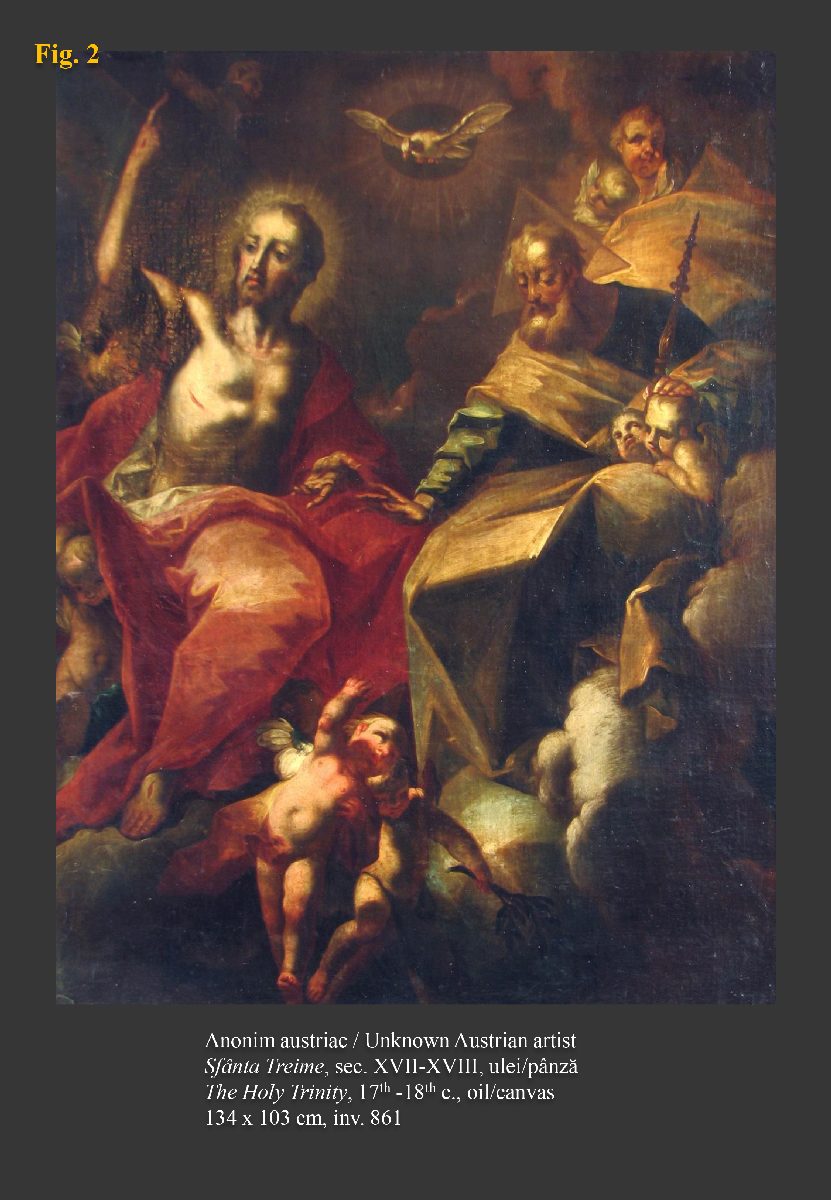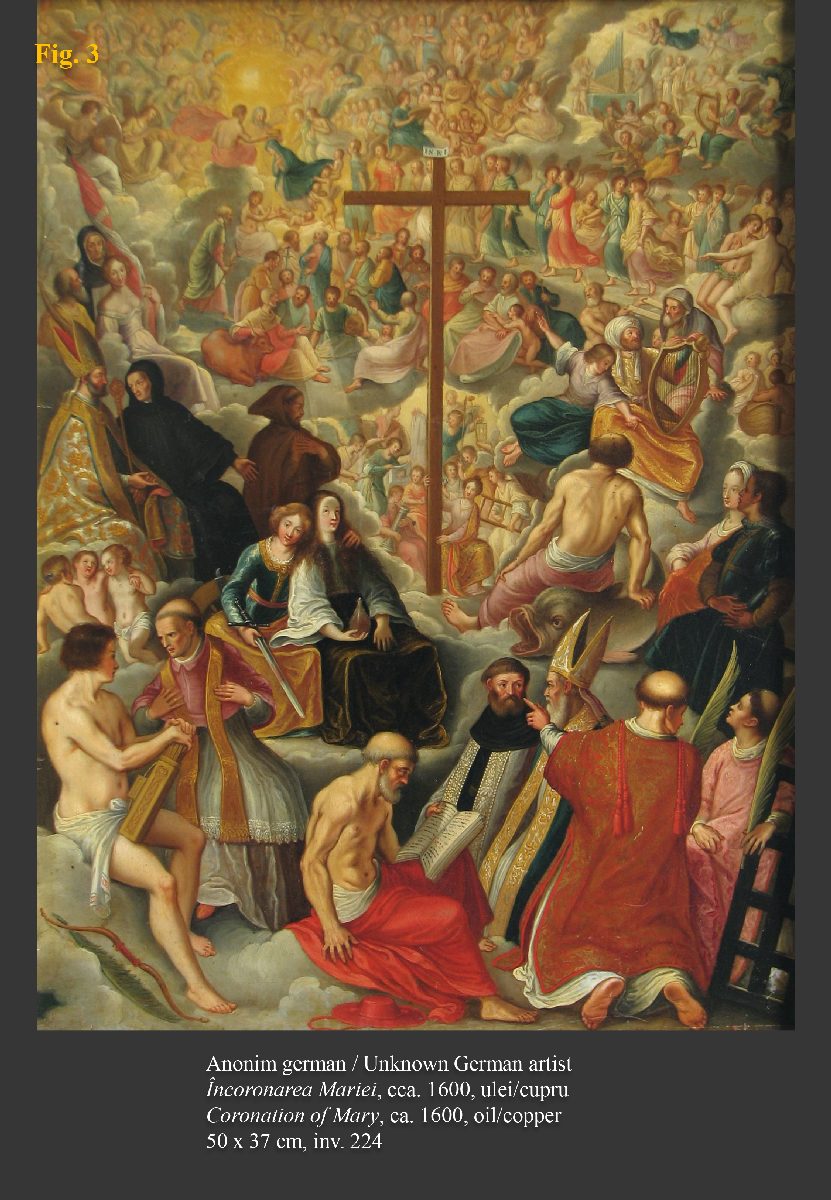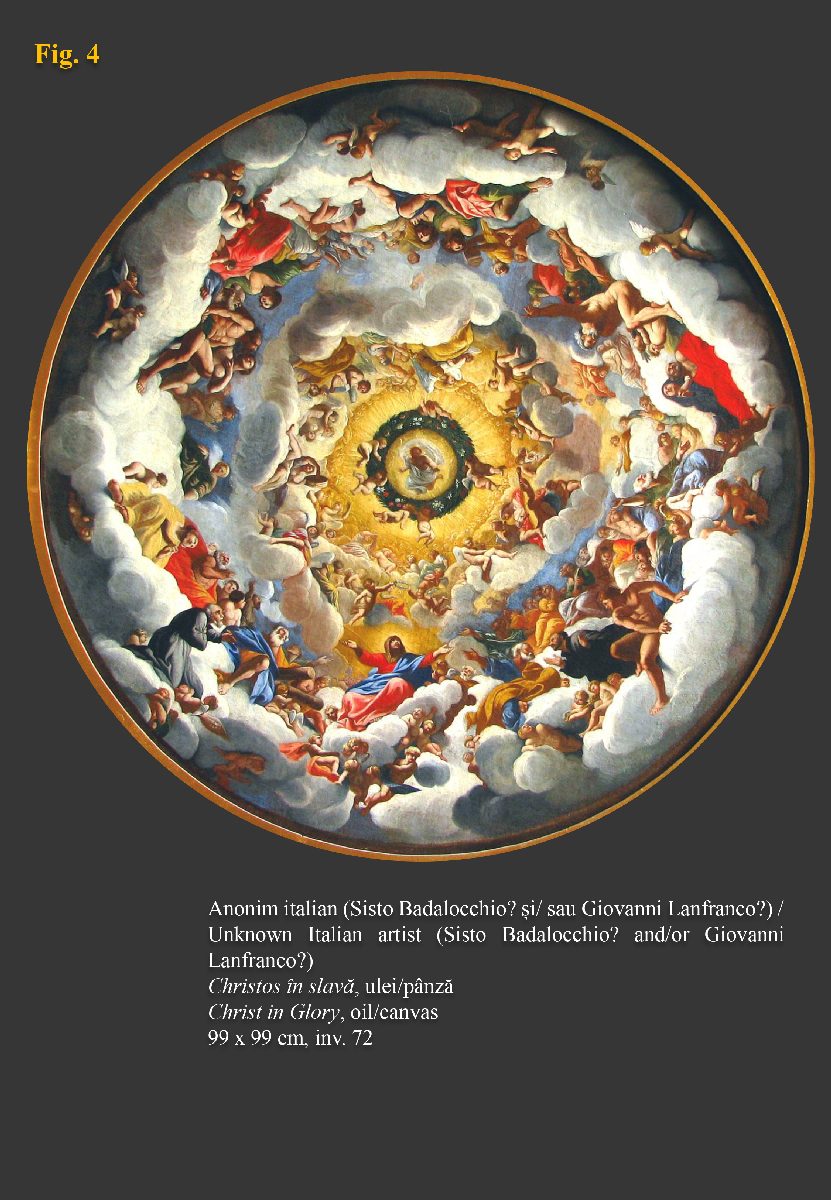Part 2: Inhabitants of the Paradise – the community of saints
Enjoying proximity to the divinity and, implicitly, the multitude of worshiping angels, in Paradise is the community of saints. This includes both those recognized by the Church through acclamation (the institutional process of recognizing this ontological status) and those unknown but deserving of this status. They have the quality of God's servants, mirroring His power, intervening through prayers in favor of believers during earthly life, at the moment of death and afterwards. Following synodal decisions, Christians represent divinity as the Holy Trinity. From what is known to date, the only work, in the European painting collection of the Brukenthal National Museum, representing exclusively the Holy Trinity, is the work of an unknown Austrian artist (Fig. 2), datable to the second half of the 17th century or in the first half of the 18th century; the work presents the person of God the Father on the right of the composition, that of the Son – Christ the Risen – on the right and the Holy Spirit in the form of a dove.
A similar representation of the Holy Trinity can be found in the upper register of the work entitled The Coronation of Mary, attributed to an unknown German in the circle of Josef Heintz the Younger (Fig. 3), dated around the year 1600. The scene of the coronation of Mary as Queen of Heaven is placed in a composition that describes the heavenly community. Above are the orders of angels. Below is the community of saints, centered in the crucifixion cross; to the left of the cross – St. Joseph (with the staff), the four evangelists with their symbols, the apostles Paul, Peter and Andrew with the attributes of martyrdom, St. Bruno of Cologne (but holding, erroneously, the banner of St. George's Crusade, as a result of the confusion with St. John of Capistrano), St. Joseph, St. Gregory the Great, St. Benedict of Nursia, St. Francis of Assisi, St. Veronica, St. Barbara, St. Catherine of Alexandria, St. Mary Magdalene Central; on the right – Adam and Eve, the apostle John, Abraham and Isaac, Moses, Samuel, David, Noah, Jonas and St. Helena. In the lower register are represented St. Sebastian, St. Carlo Borromeo, St. Jerome, St. Augustine, St. Athanasius, St. Stephen, and St. Lawrence. Donors are shown in the lower right corner. According to Alexandru Sonoc, it is possible that the work was made on the occasion of the canonization of St. Carlo Borromeo, on November 1, 1610, also the feast of All Saints.
Possible project for the mural painting of a church dome, the work Christ in glory (Fig. 4) renders the community of saints in a composition arranged in concentric circles of clouds, with silhouettes whose sizes gradually decrease towards the center of the work, giving the illusion of depth, but without suggesting a hierarchy or a chronological order. In the lower register is represented the Virgin Mary crowned by angels.
Click an image below to open it




